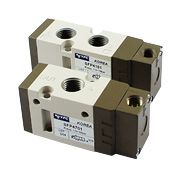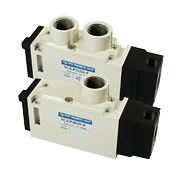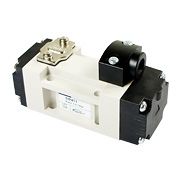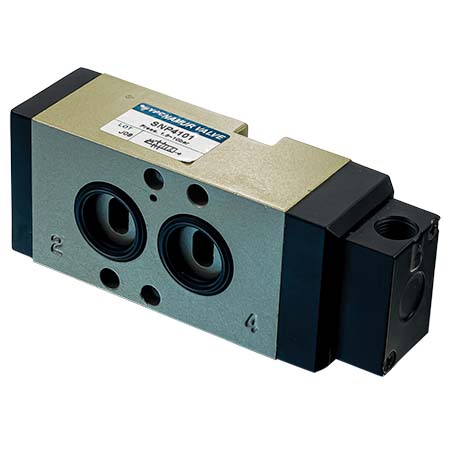Pneumatic valves
Pneumatic valves (also called zawory rozdzielające ) are used to sterowania siłownikami , the flow of liquid and gaseous media using compressed air.
In pneumatic systems and installations, where it is impossible or not advisable to control the current, pneumatic control is used. It is the most reliable and simple way to shut off or divert media flow. The construction of the valve consists of two components, the base which is in direct contact with the medium and the pilot or control.
Applying pressure to the pilot causes the piston to move or the diaphragm to lift, which in effect distorts the valve. When the control air is lost, the valve returns to its original position or remains in the given position waiting for another, different signal.
Due to the variety of work and media, a wide range of products is offered, made of various materials according to the application. Stainless steel pneumatic valves for operating conditions at elevated temperature or aggressive environment, Viton seal ensures long-term failure-free operation of almost any aggressive medium.
The most popular ones, made of brass and with NBR or EPDM seals, are used for non-aggressive liquids and compressed air. Their main feature is short reaction time and long service life. We divide them into direct action and assisted. The former do not require any pressure of the medium to operate, they operate from 0 bar, which makes them very universal.
Pneumatic power operated valves, on the other hand, require a minimum back pressure to open or close the valve. Choosing the right valve is an individual feature.
The pneumatic valves are operated with compressed air in the pressure range from 2 to 6 bar, this is the optimal value and may differ from the stated value. A filtration of 20 microns will ensure long-lasting operation and increase the number of cycles. Lubrication is not explicitly required, but each manufacturer recommends using WDG-32 oil. The most optimal is to use a compressed air station to clean, reduce and lubricate the compressed air
To control pneumatic systems, such as actuators, drives or dampers, the YPC company, which we are a direct representative in Poland, offers several series of pneumatic separating valves.
Types of pneumatic valves
- SFP - Pneumatic valves with 5/2, 5/3, 3/2 action are mono and bi-stable. They have threaded connections and controls, which make it possible to use the valves directly and mount them on valve terminals.
- SCEP- economic spool zawory rozdzielające are smaller than the SFP series valves, but have the same, and sometimes even better, parameters. They are available only for mounting on valve plates. They can be installed in various combinations on one valve terminal.
- SIP - pneumatic valves designed for mounting on valve plates, their distinguishing feature is high capacity, so they can be used to control pneumatic elements that require high air flow. They can be used on plates of various manufacturers, thanks to the fact that the connections are made according to the ISO5599 / 1 standard
- SIEP - allow them to be used on standard valve plates, are small in size, retain similar parameters as the SIP series actuators
- SNP - made in accordance with the VDE / VDI 3845NAMUR standard, mounted directly on valves, dampers or gate valves.
All selected valves have a CE certificate and the required approvals, we also have 3d files to implement the valve in the design of the device, machine.
The presented series are available in the following versions: 3/2, 5/2, 5/3 in mono and bi-stable versions, with a cut-off in the middle position, aerated and vented.
Diverter valves - how do they work?
The principle of operation of the pneumatic, dividing valve: Compressed air supplies the valve and is redirected to one of the output paths, after supplying air to control the valve, the piston changes position and thus redirects the output path to the other.
If there is a spring after the piston, after removing the control power, the piston will return to its original position, if there is no spring behind the piston, it will stay until we apply pressure to the co-pilot. This is how we distinguish between mono and bistable pneumatic valves.
Very often the system (machine) is controlled from the user level, i.e. a manual or foot valve mounted on the board, unfortunately, the large distance from the panel and the required large capacity make it impossible to install the control valve in a convenient place.
In this case, we use diverter valves controlled by a small desktop valve or a foot valve . Thanks to this, we gain space on the desktop and large capacity on the control valve. This type of solution is often used with pneumatic presses and tables.
The manufacturer of YPC guarantees a lifetime of 10 million cycles, while maintaining strictly defined parameters, such as pressure value from 0.5 - 10 bar and filtered and lubricated air at the level of 10 microns, VG32.






Login and Registration Form